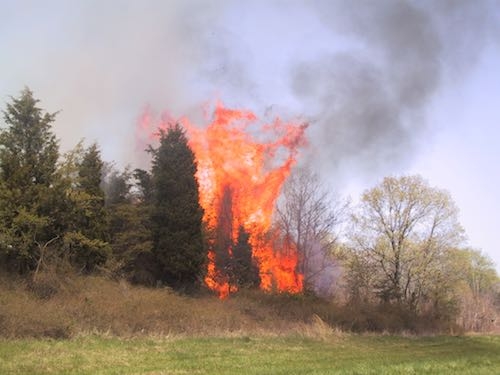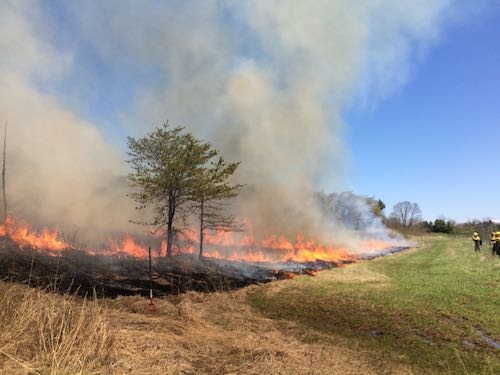Prescribed Fire Progress
By Daniel Barringer, Preserve Manager
Stewardship staff held two prescribed fires last week, both on Serpentine barrens. The first was at Willisbrook Preserve and the second was on the Unionville Barrens at Cheslen Preserve.
Natural Lands has been burning at Willisbrook for fifteen years and the burn crew discussed how the vegetation has changed over the years. Remember that we are burning there to return the habitat to ideal conditions for rare wildflowers that grow in full sun—species that are adapted to survive on the rare outcroppings of Serpentine soils but can’t compete with other plants that grow in less inhospitable soils. When we started organic matter had built up on top of the Serpentine, a cycle of plant growth making possible more plant growth, but at the expense of the rare species. Occasional fire reduces competition for sunlight and returns the soils to the conditions where the rare species can survive but many common ones cannot.
So I dug into my archives and found this photo of Willisbrook in 2001. Note the maple tree in the background for reference, and notice that the cedars (though native) have taken over a lot of the barrens, which ordinarily should look like grasslands or savanna.

Here’s approximately the same site last week, fifteen years later. The maple tree is still in the background. Flame heights are much lower because over the years burns have reduced the fuels. There are some fire-tolerant Virginia pines scattered on the barrens but mainly it has become the grassland that supports the rare species.

We burn a portion of Willisbrook Preserve almost every year, though any particular part gets burned on a 3 – 5 year rotation. Natural Lands Preserve Manager Darin Groff, preserve assistants and volunteers have done other management on the barrens too, to manage invasive plants such as ailanthus and autumn olive. Fire is a tool that has been effective at achieving the goal of maintaining and expanding suitable habitat for rare species.
